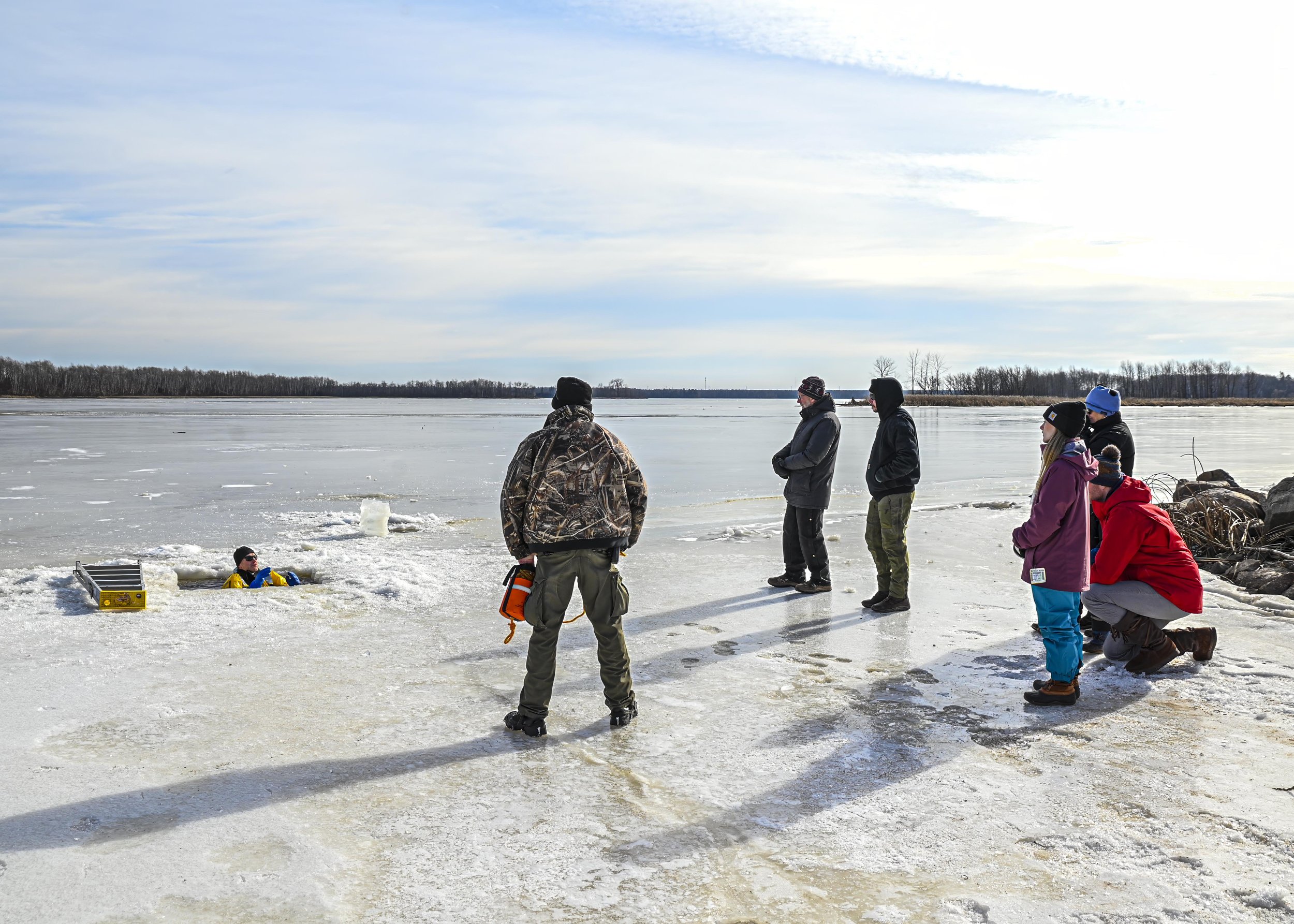Ice Safety on the River
We've had a cold spell in the Twin Ports, but it's important to remember that ice is never 100% safe... especially when recreating on a river with flowing currents. Here are a few ice facts from the Minnesota Department of Natural Resources:
Photo by Michael Anderson at the St. Louis River Alliance’s 2024 Winter Ice Safety Event at Spirit Lake Marina & RV.
New ice is usually stronger than old ice. Four inches of clear, newly-formed ice may support one person on foot, while a foot or more of old, partially-thawed ice may not.
Ice seldom freezes uniformly. It may be a foot thick in one location and only an inch or two just a few feet away.
Ice formed over flowing water and currents is often dangerous. This is especially true near streams, bridges and culverts. Also, the ice on outside river bends is usually weaker due to the undermining effects of the faster current.
The insulating effect of snow slows down the freezing process. The extra weight also reduces how much weight the ice sheet can support. Also, ice near shore can be weaker than ice that is farther out.
Booming and cracking ice isn't necessarily dangerous. It only means that the ice is expanding and contracting as the temperature changes.
Schools of fish or flocks of waterfowl can also adversely affect the relative safety of ice. The movement of fish can bring warm water up from the bottom of the lake. In the past, this has opened holes in the ice causing snowmobiles and cars to break through.
Learn more about ice safety on the MN DNR website:
Ice Safety Tips video from the Minnesota Department of Natural Resources
Late Season Ice Safety video from the Minnesota Department of Natural Resources
What to do if your car goes through the ice video by Kare 11 and MN DNR
How to survive a fall through the ice video from Kare 11 and MN DNR


